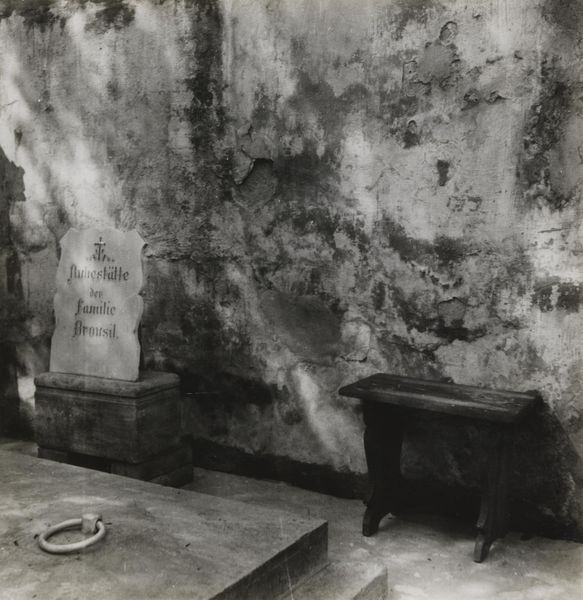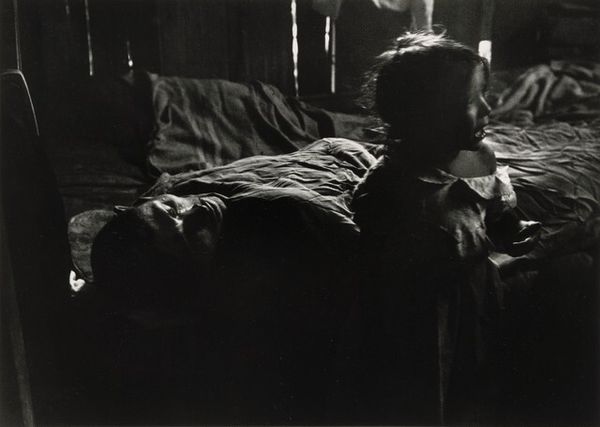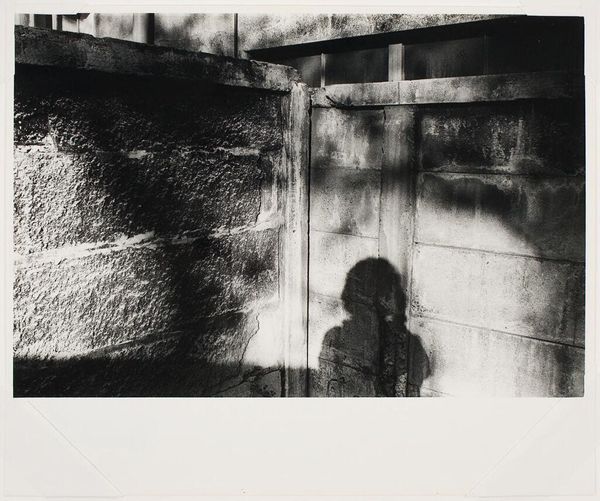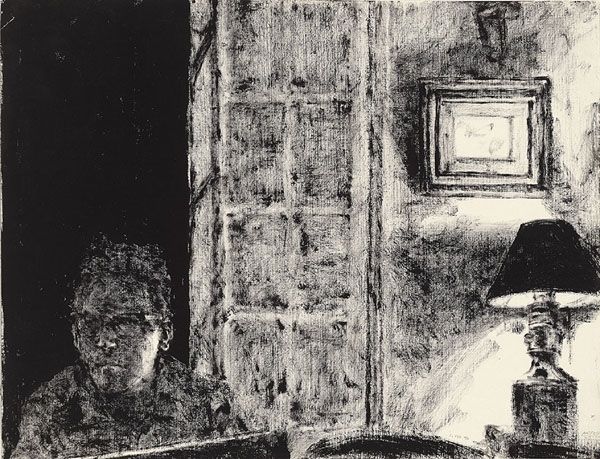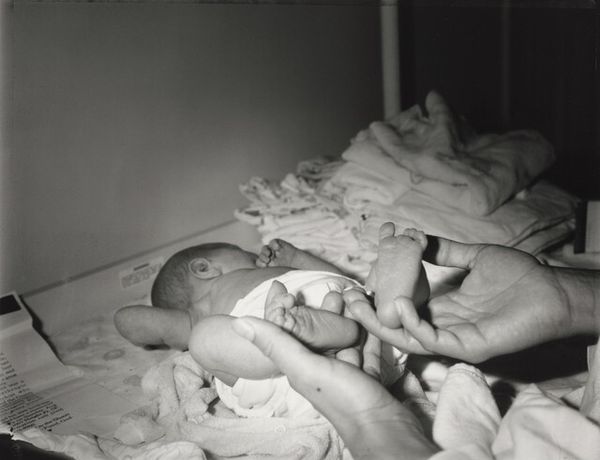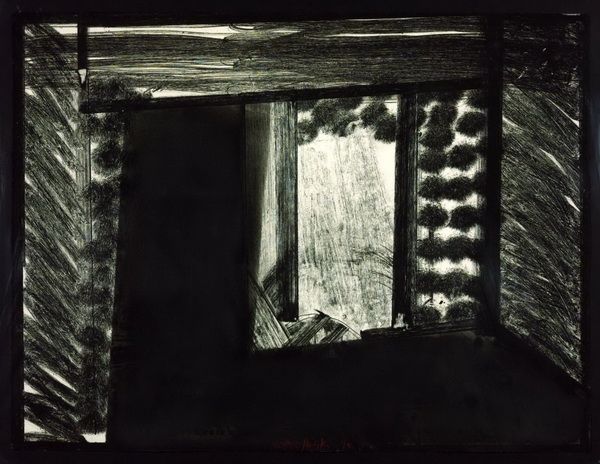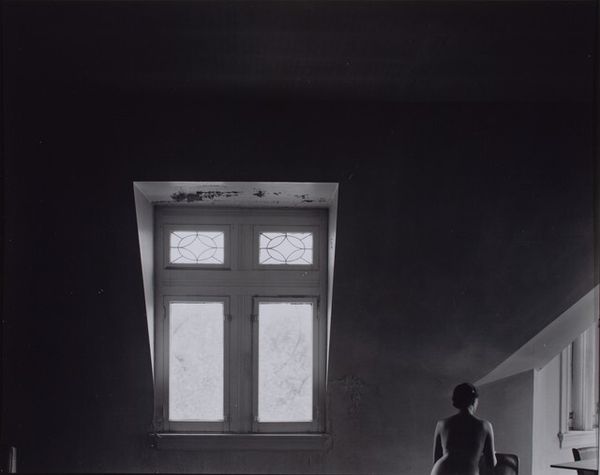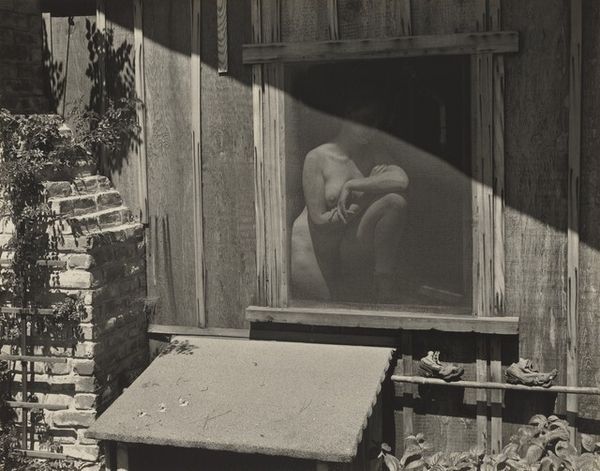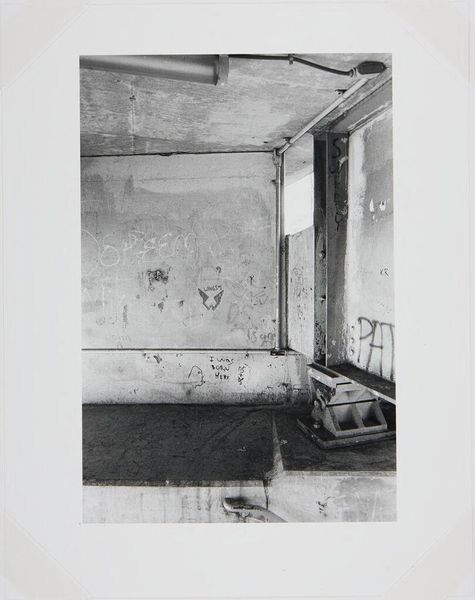
photography, gelatin-silver-print
#
portrait
#
abstract-expressionism
#
black and white photography
#
landscape
#
photography
#
black and white
#
gelatin-silver-print
#
monochrome photography
#
monochrome
#
nude
#
realism
#
monochrome
Dimensions: image/sheet: 17.78 × 22.86 cm (7 × 9 in.) mount: 35.56 × 39.37 cm (14 × 15 1/2 in.)
Copyright: National Gallery of Art: CC0 1.0
Curator: Wynn Bullock's 1957 photograph, "Navigation Without Numbers," presents us with an interior scene, starkly rendered in gelatin silver print. It’s dominated by a large bed upon which a nude woman and a child rest. What is your initial reaction? Editor: It's arresting, and intensely textured. The rough plaster walls, the dark bedspread—everything feels very tactile. There’s a distinct contrast between the raw environment and the smooth skin of the figures, that foregrounds their vulnerability in this space. Curator: Indeed, the textural interplay is key. Bullock uses light and shadow to sculpt the scene, directing our gaze. Note how the sharp lines of the window frame contrast with the softer, almost dreamlike quality of the figures themselves. This juxtaposition guides a structured reading of the composition and form. Editor: The production of such contrasts fascinates me. Given that this is a gelatin silver print, how might Bullock's developing and printing choices further emphasize these elements? The starkness suggests careful manipulation of the light during printing. I wonder if he was making social commentary about the starkness of reality and dreams. Curator: That's an interesting line of inquiry. We can consider the social conditions during the era, and how that could have affected the theme or message conveyed. I'm compelled by the arrangement of bodies relative to their shared space; there is formal complexity in how the light describes their skin against this environment of strong dark tonalities. Editor: For me, understanding the photograph necessitates a view of the context around it. The fact that it's a constructed interior with very heavy treatment, combined with human subjects, raises questions about Bullock's choices of setting and labor in staging, that cannot be viewed independent of content. Curator: Fair enough. However, I lean towards how Bullock masterfully uses the formal constraints of photography—tone, texture, line—to communicate meaning. Its somber elegance invites contemplation. Editor: I suppose both things can be simultaneously true. Thank you for taking the time to help highlight this.
Comments
No comments
Be the first to comment and join the conversation on the ultimate creative platform.
